In a crowded market, there’s an active warming system for every facility’s needs.
Maintaining normothermia during the patients’ perioperative journey – from pre-op through discharge – reduces the risk of inadvertent hypothermia, increases the body’s ability to stave of infection and does wonders for patients’ satisfaction levels. It’s no wonder the patient warming solutions market is a crowded place. With dozens of vendors claiming to have the answer to facilities’ warming woes, which system is right for you?
The most potent devices rely on active patient warming and can be broken down into three basic system types:
- Forced-air warmers
- Circulating water mattresses
- Conductive fabric warming blankets
Deciding on the type of active warming system is half the battle, but there are several other considerations that should factor into purchasing decisions.
Total cost. To determine the real cost of each warming solution, you need to factor in the system itself, the costs of disposables (blankets, gowns, etc.) and the intangible elements such as the time it takes to set up and warm patients versus the effectiveness of the device. Speaking of effectiveness, it’s always a good idea to record patient’s temperatures (pre-op, in the OR and post-op) when you’re trialing a system to see how it affects the team throughput for your facility.
Space and footprint consideration. Centers that place a premium on green practices will likely rate systems with reusable components more highly than ultra cost-conscious ASCs. But one factor affects virtually all outpatient facilities: Space. In addition to ensuring your center has the room for the system itself, check on the length of its electrical cord as well as whether hoses or wires can easily be placed in a manner that won’t present a tripping hazard for your staff.
Case mix. While patient access doesn’t affect patients pre- or post-operatively (they can be totally covered), it often plays a key role in the OR itself, as certain systems may inhibit a surgeons’ approach. For instance, Daniel Mills, MD, FACS, a plastic surgeon who is owner and medical director at Oceanview Ambulatory Surgery Center in Laguna Beach, Calif., employs multiple active warming systems because of the variety of procedures he performs. If his patient is undergoing a facelift, Dr. Mills uses a forced-air system, but for a full-body liposuction, he employs a circulating water mattress.
Here are some products currently on the market:
TRENDELENBURG EXCLUSIVE
Augustine Surgical
HotDog Temperature Management System
hotdogwarming.com • 888-439-2767
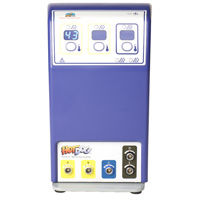
The vendor says this system can deliver superior normothermia results by warming above and below the patient simultaneously using flexible, versatile blankets and mattress overlays. The system, which employs proprietary semi-conductive fabric technology that actively warms patients without blowing air or using water, is described as commonly used in orthopedic, cardiac, plastic, general and robotic surgeries, and the only system that can both warm and secure patients in the Trendelenburg position.
SLIM AND QUIET
Encompass Group
Nova
encompassgroup.com • 800-284-4540
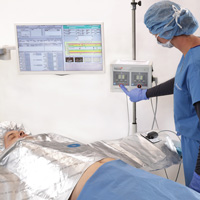
The vendor says this thin, disposable patient warming blanket operates without the noise of forced air systems – in fact, it is described as “silent.” Its novel carbon veil technology, which uses less than five amps for heat and is manufactured similarly to paper, has long been used as a heater in car seats and features no air movement. When applied in pre-op, it banks a patient’s body heat before surgery even when unpowered, and then supports maintaining normothermia throughout the surgical process – all without air movement or moving parts. Available in upper and lower body versions, it is touted as easy to apply, and is said to stay in place once applied. The soft-touch controller unit, described as intuitive to operate and universally pole-mountable, features adjustable temperature settings and a large temperature display, and can independently manage two blankets simultaneously to maximize skin coverage. Because the blanket doesn’t emit excess heat, patients can stay warm while clinicians remain cool during surgery. The blanket is flexible enough that it can still maintain performance after cuts or spills, and its small-profile cable can be secured easily with its integrated linen clip to reduce tripping hazard risk.
QUIET AND COMFORTABLE
Northgate Technologies, Inc.
Gentherm
ASTOPAD
gentherm.com • 800-989-7373
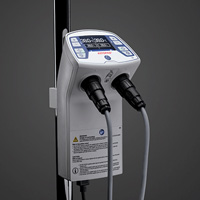
This resistive, reusable patient warming system, described as safe and simple to operate, features two independently controlled connections that enable the patient’s full body to be warmed simultaneously. Warming blankets, which employ the vendor’s proprietary silent radiolucent heating technology also used to heat seats in millions of vehicles, can be placed over or underneath the patient, and temperature settings can be set individually in precise 0.5°C increments. Featuring an integrated rechargeable battery with two hours of continuous to allow warming to continue uninterrupted during transport, each blanket features eight temperature sensors and can be wrapped around the patient while in use for increased versatility in positioning. The blankets can be used in conjunction with positioning devices on OR tables and can be easily wiped down with approved disinfectants.
ADDED ASSURANCE
Northgate Technologies, Inc.
STERIS
Patient Warming System
steris.com • 800-548-4873
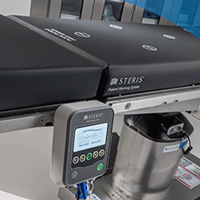
This accessory, meant to augment rather than replace current warming protocols, employs conductive heat transfer through direct contact between the patient and the table. Consisting of a heated surgical table pad and optional overbody blanket that the vendor says isn’t too bulky, it is intended to provide additional warming before, during or after convective air warming technologies are used in the OR. Its controller, which can be mounted to the table side rail or an IV pole, features thin, easy-to-connect cables. The system also includes a three-inch heated torso pad and three-inch pads for head and legs. The vendor says the system is particularly helpful for shorter surgeries where postoperative hypothermia is more likely due to the lack of time needed to overcome the effect of redistribution with intraoperative warming alone. It recommends providers start the system as soon as possible when the patient arrives and prior to induction of anesthesia.
PRECISE CONTROL
Operating Room Innovations
Stryker
Altrix Precision Temperature Management System
stryker.com • 800-784-4336
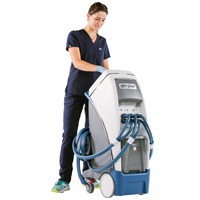
This system provides a high level of granular control, employing thousands of power settings to measure the patient’s temperature every 1.3 seconds to achieve steady-state control within ± 0.1° C. Its non-gel-adhesive, non-invasive disposable, adjustable three-layer wrap kits – made of soft, non-woven, spun-bonded polyester fabric and able to accommodate 99% of adult patients – enhance thermal transfer and protect skin integrity with increased surface area contact to reduce air gaps that can occur between cooling/warming devices and patient skin. Three unique modes allow providers to set water temperature alone, or precisely control patient temperature through rapid device-patient interaction. A user-friendly graphic control interface features prompts that allow providers to initiate patient therapy with just a few finger taps and provides key temperature management treatment data including patient temperature, target temperature, water temperature, timing and power levels. Three individually monitored water circuits regulate water temperature and flow performance to ensure optimum therapy delivery.
COMPREHENSIVE COVERAGE
3M
Bair Hugger Flex Warming Gown
3m.com • 800-364-3577
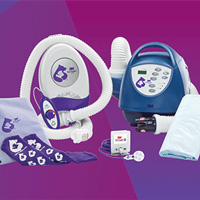
Designed to address and simplify the entire perioperative warming process while entirely removing the need for warmed blankets, this gown features two independent inserts that allow for greater flexibility to warm the upper body, torso or lower body. Because of this capability to cover numerous parts of the entire body, the gown can be used to warm patients for virtually any procedure or specialty. Applicable for both clinical or comfort purposes, the warming tools built into the gown include a head drape, tie strips and a patient adhesive strip. Described as quiet, lightweight and easy to use, the patient-adjustable warming unit connects to the gown to provide the necessary air flow, and can be located on a wall, bedrail, IV pole, table or any flat surface. OSM
.svg?sfvrsn=be606e78_3)

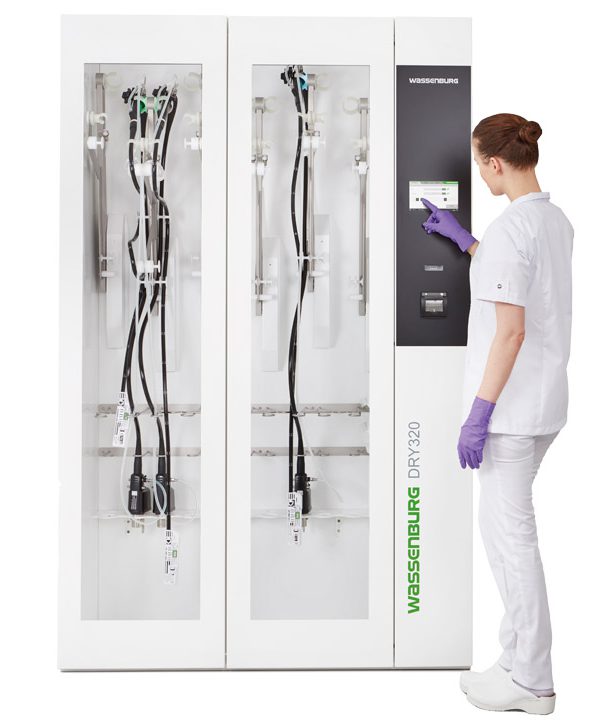






.svg?sfvrsn=56b2f850_5)